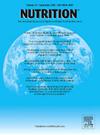生物阻抗分析的演变:从传统方法到可穿戴技术
IF 3.2
3区 医学
Q2 NUTRITION & DIETETICS
引用次数: 0
摘要
身体成分评估对于了解健康和营养状况至关重要。氧化氘稀释法等传统方法虽然准确,但由于成本和复杂性而不切实际。生物阻抗分析(BIA)已成为首选的临床和研究技术。根据恒定水合假设,BIA 可测量人体总水分,进而测量脂肪量和无脂肪量。可穿戴式 BIA 技术可提供实时的身体成分数据,加强了居家监测。虽然这些设备在测量体脂率和骨骼肌质量等参数方面显示出良好的前景,但与双能 X 射线吸收测量法和 4 室模型等方法相比,其准确性仍有差距,需要进一步验证。要获得可靠的结果,就必须解决用户的依从性和环境限制问题。这篇叙述性综述探讨了可穿戴 BIA 技术的现状。尽管存在挑战,但可穿戴 BIA 设备仍能带来显著的益处,并强调了持续创新和验证的重要性。本文章由计算机程序翻译,如有差异,请以英文原文为准。
The evolution of bioimpedance analysis: From traditional methods to wearable technology
Body composition assessments are essential for understanding health and nutritional status. Traditional methods like deuterium oxide dilution, while accurate, are impractical due to cost and complexity. Bioimpedance analysis (BIA) has emerged as a preferred clinical and research technique. BIA measures total body water and, by extension, fat mass and fat-free mass, based on constant hydration assumptions. Wearable BIA technology provides real-time body composition data, enhancing at-home monitoring. Although these devices show promise in measuring parameters like body fat percentage and skeletal muscle mass, accuracy discrepancies compared to methods like dual-energy X-ray absorptiometry and the 4-compartment model require further validation. Addressing user adherence and environmental limitations is essential for reliable results. This narrative review examines the current landscape of wearable BIA technology. Despite challenges, wearable BIA devices offer significant benefits, emphasizing ongoing innovation and validation.
求助全文
通过发布文献求助,成功后即可免费获取论文全文。
去求助
来源期刊

Nutrition
医学-营养学
CiteScore
7.80
自引率
2.30%
发文量
300
审稿时长
60 days
期刊介绍:
Nutrition has an open access mirror journal Nutrition: X, sharing the same aims and scope, editorial team, submission system and rigorous peer review.
Founded by Michael M. Meguid in the early 1980''s, Nutrition presents advances in nutrition research and science, informs its readers on new and advancing technologies and data in clinical nutrition practice, encourages the application of outcomes research and meta-analyses to problems in patient-related nutrition; and seeks to help clarify and set the research, policy and practice agenda for nutrition science to enhance human well-being in the years ahead.
 求助内容:
求助内容: 应助结果提醒方式:
应助结果提醒方式:


